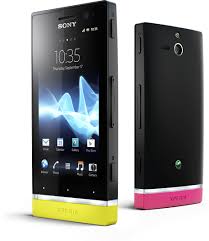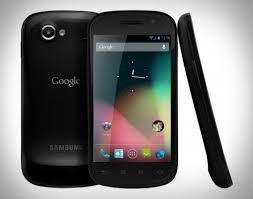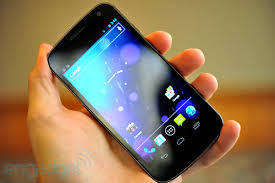Welcome to my monthly round of eligible bachelors in the phone world. This month I am in a flux; some pretty huge towers have fallen, and all they have left in their wake is a mass of rubble.
Let's begin with the basics.
1) DIRT-CHEAP, CALLS AND TEXT ONLY: BUY ANY PHONE FROM SAMSUNG OR NOKIA, JUST DON'T SPEND A PENNY OVER Rs.2,000
I am at a loss here. I have been very vocally enamored with the Nokia X2-02 as my budget phone of choice. I even advocated it despite occasional instability. For me, the feature set more than justified the price. No longer.
See, since last month or so, the second SIM slot in my phone has stopped working. Since this has been my secondary phone, I have hardly used it. I can take it to a service center and get it fixed, but the very appearance of this defect is startling. With such a basic feature gone missing for no apparent reason, I can no longer recommend X2-02.

So what to buy then? I present, friends and neighbors, the Nokia 110. It calls. It texts. It has an address book. If you need more, scroll downward, otherwise this is the phone for you.
2) CHEAP SMARTPHONE: HTC EXPLORER
 ]
]


Let's begin with the basics.
1) DIRT-CHEAP, CALLS AND TEXT ONLY: BUY ANY PHONE FROM SAMSUNG OR NOKIA, JUST DON'T SPEND A PENNY OVER Rs.2,000
I am at a loss here. I have been very vocally enamored with the Nokia X2-02 as my budget phone of choice. I even advocated it despite occasional instability. For me, the feature set more than justified the price. No longer.
See, since last month or so, the second SIM slot in my phone has stopped working. Since this has been my secondary phone, I have hardly used it. I can take it to a service center and get it fixed, but the very appearance of this defect is startling. With such a basic feature gone missing for no apparent reason, I can no longer recommend X2-02.

So what to buy then? I present, friends and neighbors, the Nokia 110. It calls. It texts. It has an address book. If you need more, scroll downward, otherwise this is the phone for you.
2) CHEAP SMARTPHONE: HTC EXPLORER
 ]
]
My remarks for this phone are largely carried over. This phone is facing stiff competition in desirability stakes from Samsung Galaxy Y/Duos/Pro as well as HTC's own Wildfire S which has now become quite cheap. However, at Rs12k this feature set is unbeatable. The Galaxy Y series does have the better processor but it suffers from the very limiting QVGA display. But wait...there's ANOTHER new player in town. Behold the HTC Cha Cha.

At Rs15k, Cha Cha is one hell of a phone. It has an excellent QWERTY keyboard and a good-ish screen. I have used it and found that it performs all basic functions quite admirably. The one drawback is how the screen sometimes fails to turn off when you put it to your ear - and that results in missed calls. But then, it might be some software or hardware defect in my own set.
3) UPPER LOW-RANGE SMARTPHONE
This is a new category, and I have just had to shoehorn it (awkward name and all) thanks to one manufacturer: Sony. The company is churning out smartphones with extremely attractive specs at jaw-dropping prices, so much so that the Xperia Neo V, a set that I CANNOT recommend thanks to its broken software, sells for Rs19k. Xperia Ray, the 8 megapixel cameraphone with Android 4.0, sells for the same price. But the truly stunning product in this plethora is Sony Xperia U.
The phone sports a DUAL-CORE 1 Ghz processor, a 5 MP snapper, 512 of RAM and no shortage of style. The price? Rs20k. Yes, you read that right. A Sony phone with a 3.5 inch screen, resolution of 800x480 and a dual core processor is available, brand new, for Rs20 k. I haven't tested this phone but it shows great promise. HOPEFULLY the typical Sony trait of software slowing down to a crawl will be fixed or mitigated through the presence of dual core processor. Drawbacks? 4 GB of free memory, no card slot. Since this phone is equipped with a fairly high end graphics processor, one would expect to be able to play the latest games on it. The problem is that many of these games clock in at above 1 GB or even more. The absence of an SD card slot, in my opinion, comes close to crippling this phone. Also, the phone launches with Gingerbread (Android 2.3) which is an OS from last year.
But the price! That, coupled with the promised upgrade to Android 4.0, makes this phone my choice for 'Upper Low-Range'.
3) MID PRICED SMARTPHONE: Samsung Nexus S

HTC One V looses its crown, if only due to the fact that I haven't been able to use it for any length of time. Why Nexus S, a two year old smartphone? The winning ingredients are all there. 1 GHz single core processor, latest Android 4.1 Jelly Bean, good camera, good design, and a price of around Rs25k. Given how JB can transform a phone into a super fast and smooth device, this is an unbeatable option. Yes, there is a plethora of smartphones at this price and some have even better specs, but it's all about the software, and there's no beating Jelly Bean.
HTC One V looses its crown, if only due to the fact that I haven't been able to use it for any length of time. Why Nexus S, a two year old smartphone? The winning ingredients are all there. 1 GHz single core processor, latest Android 4.1 Jelly Bean, good camera, good design, and a price of around Rs25k. Given how JB can transform a phone into a super fast and smooth device, this is an unbeatable option. Yes, there is a plethora of smartphones at this price and some have even better specs, but it's all about the software, and there's no beating Jelly Bean.
There are some sets from Sony such as Xperia Arc S, Neo V etc which are selling at midrange prices. Problem is, there's no trusting those phones. Several of my friends and relatives have bought the Xperia Neo V at my recommendation, and I am constantly receiving calls of complaint from them. It has been updated to Android 4.0 but there's no beating the suckiness of custom Android skins and how they slow down to a crawl over time. At a price lower than Rs20k this might be acceptable to a degree but no longer. So bye, bye custom skins, hello AOSP Android.
4) HIGH END SMARTPHONE: SAMSUNG GALAXY NEXUS

AOSP rules, and so does Galaxy Nexus. Since last month, it has received Android 4.1 Jelly Bean, and boy, does it beat every other phone on the market with its sheer speed and smoothness. At Rs37k it is hard to find a better specc'ed phone as it is, but it is its software that ensures that Galaxy Nexus remains the best phone money can buy for the foreseeable future.
AOSP rules, and so does Galaxy Nexus. Since last month, it has received Android 4.1 Jelly Bean, and boy, does it beat every other phone on the market with its sheer speed and smoothness. At Rs37k it is hard to find a better specc'ed phone as it is, but it is its software that ensures that Galaxy Nexus remains the best phone money can buy for the foreseeable future.
There are a few compromises. The camera is relatively average in terms of picture quality, battery life is not the best and the 16 GB built in memory can be a tad limiting in absence of an SD slot. But these fade into the background considering the sheer elegance of this solution. In raw hardware terms, the Galaxy Nexus loses out to current Android flagships such as Galaxy S3 and HTC One X only in terms of processing power, screen brightness, memory and camera. Given the monetary savings, these quibbles are insignificant. All that ceases to matter once Jelly Bean kicks into gear and blows every other mobile OS out of the water, regardless of the machine it is running on.
5) FOR THE ADVENTUROUS - GOOGLE NEXUS 7 TABLET + NOKIA 110


What has a 7-inch screen, Android Jelly Bean, excellent quad core processor, a hardware keypad, crystal clear call quality, long battery life, and costs Rs32k? Why, it's Google's Nexus 7 tablet AND Nokia 110!

What has a 7-inch screen, Android Jelly Bean, excellent quad core processor, a hardware keypad, crystal clear call quality, long battery life, and costs Rs32k? Why, it's Google's Nexus 7 tablet AND Nokia 110!
See, for around Rs30k you can obtain the best tablet on the market that is not the iPad. Google's Nexus 7 tablet sports a high quality 7 inch display, Android Jelly Bean, all powered by Nvidia Tegra 3 quad core processor. It's all the tablet you will ever need combined with ease of use, speed, and compactness. If you use a high end smartphone but sometimes wish for a bigger screen, this is the device for you.
It doesn't have a SIM slot though, so you need something else to make calls and texts. May I suggest Nokia 110. Carry it around in the middle of Saddar at 1.00 am at night without fear. If threatened with a gun, hand it over without a second thought, while your multimedia powerhouse rests safe and secure at home where it will be properly used. You have all bases covered with this setup at an astoundingly low cash outlay.
So how come old favorite Galaxy Note is not returning here? For one thing, I have sold it. Nah, that's not the reason. Real reason is that it costs way more than the Nexus 7, offers arguably less utility given its smaller size, and falls flat on its face hobbled with Samsung's TouchWiz UI. You can root it and flash pure Android, but it retaliates with horrendous battery life. So, no cigar.
I hoped you liked this month's noticeably wizened and sober edition of 'Which Phone to Buy Right Now'. See you soon with 'Which Phone to Avoid At All Costs'!!
